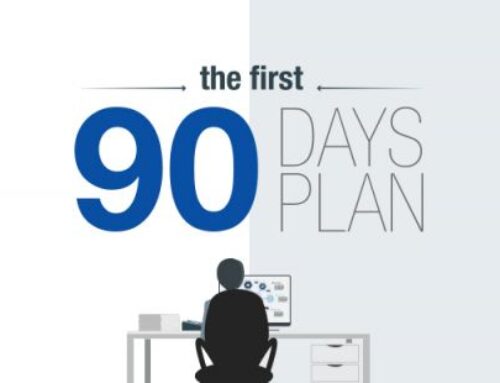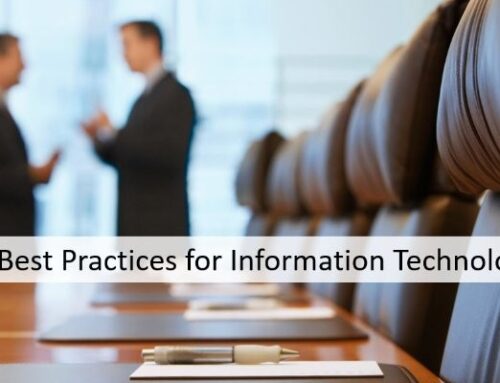Mutual success and the quality of executive relationships have a great impact on the performance of a business and the profitability of the organization. The ability to get work done and achieve results through others is one of the most critical aspects of executive leadership skills. In order to deliver customer satisfaction, increase profitability, and provide maximum value to share holders CEOs must build and maintain positive and effective relationships with their CIO.
What are a few ways that CEOs can build a stronger and more productive relationship with their CIO?
Respect
Depending upon whom you ask, the word respect has various meanings and has different context to various organizations and specific individuals. In the majority of instances and the focus of this article are cases where individuals make judgements about others as to whether the qualities they possess are valued and worthy. Based upon my direct professional experience and discussions with many of my peers, the role of CIO is one of the least respected leadership positions that one can hold.
- Many organizations constrain IT’s ability to act strategically by simultaneously demanding both cost reductions and a strategic innovation agenda without providing adequate budget, enough of the right resources or resolving the political conflicts that make a CIO’s success possible.
- Age-old perceptions and culture of IT as being mostly a cost center and commodity service still linger and hinder the value that IT can bring the business. IT is a catalyst in today’s heavily dependent technology world and should be treated accordingly.
- ITs value and ROI can be opaque and hard to quantify.
- Technology continues to change at a rapid pace and CIOs can struggle to deliver new and innovative solutions to the business because they are continually caught up in putting out fires and delivering the day-to-day projects with little time left for attending events or engaging in thought leadership with peers discover new ideas and deliver innovation. Attending these events and being away from the “chair” are frowned upon.
- CIOs are still being left out of strategic planning and at many times, there is no clear qualitative and quantitative business strategy for the CIO to align with.
These types of CIO challenges can make operating effectively difficult without understanding and support. As a CEO, take time to evaluate your CIOs operating environment for these and other barriers to their success. Some reflection will give you the opportunity respect your CIO and the difficulties that they face.
As with all your employees, to get respect, you’ve got to show respect. This takes time and effort. Your employees are more likely to work harder to accomplish a shared goal they believe in for someone that they respect and believe in.
We all want to be treated with respect and respect is one of the best performance enhancement tools in the CEO’s arsenal. Especially for undervalued Information Technology Departments.
Trust
Building trust can often times be viewed as a secondary or soft skill with limited impact on the business. However, trust is an essential and critical component in delivering elite level positive corporate financial performance and delivery of IT services from your CIO is critical to that goal. According to Harvard Business Review, a 2015 study by Interaction Associates shows that high-trust companies “are more than 2½ times more likely to be high performing revenue organizations” than low-trust companies. Trust in the CEO, CFO and CIO relationship will be a key factor in improving corporate financial performance.
The trust that you have to build and earn with your CIO is just as valuable as the trust of the rest of your executive team, employees, shareholders and customers. Trust is shared bond that you must earn and build together, in both directions. Building and earning trust with your CIO requires:
- Transparency – Open and honest communications.
- Hard work – There must be a conscious effort to walk your talk, Keep your promises and align your behavior with your values.
- Listening – Hearing what your CIO and their team have to say, absorb, process and assure them that you are listening and that you’ve understood what they’ve said.
- Consistency – Inconsistency builds fear, resentment, and distance in relationships. These are some of the last things we want to see, if we want a positive relationship.
- Follow Through – Make sure to do what you say you will do and keep your promises.
Mentoring and Coaching
As CEOs, you have a lot to give to others due to your experience and success. All too often, I see lots of potential in IT leaders where others may not or where CEOs may not have formal training or guidance on how to mentor or coach. I’ve seen successful mentoring and coaching by CEOs.
I would recommend that you balance coaching and mentoring between yourself and an outside resource such as a performance coach. The investment will be well worth it.
Investing in your senior level staff improves:
- Employee Retention
- Business Goal Engagement
- Allows Advancement
- Reduces Program Costs
- Drives Positive Behavioral Change
Empathy
Empathy is a powerful tool in building effective relationships. Empathy is the ability to put yourself in another person’s shoes: identifying with and understanding the thoughts, feelings and experiences of someone else. It doesn’t mean you completely understand. It doesn’t mean you agree. Demonstrating empathy means you seek to understand and seek to help another person feel understood.
The IT function can be difficult to manage for numerous reasons that may include politics, culture, past neglect of the IT function, limited budget, rapid change inside and outside of the company, etc. When things run smoothly, executives can possibly assume that that IT leadership isn’t working hard. I would say that it’s quite the contrary. The reason why things can seem “quiet” is that IT leadership teams are working hard to keep things running smoothly. There can be an incredible amount of activity that goes on “behind the curtain”. CEOs may not be aware of some of these issues.
Here are some questions that you can reflect on to gauge you empathy towards your IT leadership:
- Do you really understand the challenges that your IT leadership is up against?
- Have you taken the time to have one on one conversation that allow your leaders to open up and listen to what your IT leaderships perceive their issues are?
- How do you think you might handle situations your IT leadership may have fell short with? Can you offer alternatives means to resolution for the future as a tool?
- Do you have an outside coaching voice helping you to understand and reflect on situations with your IT leadership?
- What have you done to connect with your IT leadership that will bring you closer together?
Empathy has been described as one of the toughest skills for many successful executives to manage but it is critically important in connecting with and supporting your IT leadership. Taking the time the stand in other people’s shoes will dramatically help your leadership style, build stronger relationships with your IT leadership and in turn make your company more profitable and successful.
Little Things
Making a big difference in your relationship with your CIO can be incredibly easy and incredibly valuable. Here are some simple things that you can do:
- Take a genuine interest in your employee’s personal and family situations.
- Saying thank you and good job every so often can go an incredibly long way.
- Have one on one meetings that don’t always focus on business issues. Talk about personal growth, goals and challenges.
- Go to your CIO’s office and sit with them. Don’t always force them to come to you.
- Use the word “We” as often as possible.
- Remember birthdays and special occasions of your employees. Take time out to celebrate.
- Treat your CIO’s employees just as good as you treat your CIO. Engage openly with them on a regular basis.
- Be connected and transparent with your employees and show care and concern.
- Make a conscious effort to build and improve your L-factor.
- Smile often and make your CIO feel welcome, even when you’re under tremendous stress and don’t feel like smiling.
- Say hello, connect with employees in the hallway, on the elevator and have walks through departments. Don’t just get up in front of the crowd at corporate events.
- Show passion and purpose for your organization often.
- Publicly provide awards to people and departments in your organization for good service.
- Be willing to forgive mistakes. None of us are perfect. You never know what particular situation one of your employees may be in. Be available, transparent, and supportive before and when things go wrong.
Summary
I focused on just a few aspects of mutual success and the quality of executive relationships between the CEO and CIO. These included respect, trust, mentoring, coaching, empathy, and little things. These aspects can have a great impact on the performance of a business and the profitability of the organization. In order to deliver customer satisfaction, improve profitability, and maximum value to shareholders CEOs must build and maintain positive and effective relationships with their CIO.
If you have any questions or comments then please let me know. Additionally, if there’s an C-Suite subject regarding IT that you’d like to see then let me know.






